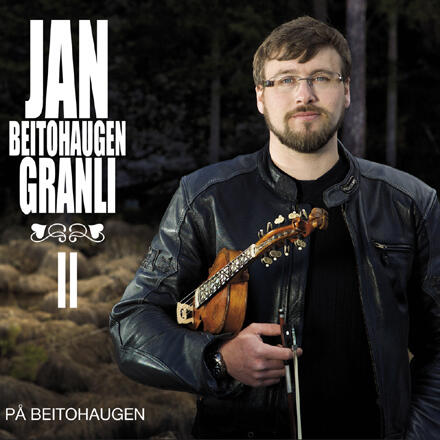Hardanger fiddler Jan Beitohaugen Granli was first introduced to the special Beito style within the Valdres repertoire by his grandfather, Ola Beitohaugen (1919–1996). Valdres is a valley in the center of South Norway. His grandfather came from the farm Rødningen in Robølsbygda, and later settled at Leira in Valdres. He was a butcher and sausage maker with an exceptional talent for handling animals, and an excellent dancer. Jan and his grandfather used to drive around Valdres in his white Toyota Corolla, and on these trips they always brought a cassette recording of Engebret Beitohaugen. He was fond of taking back roads and telling stories and anecdotes of farms and people in the area. They ate lemon drops and had a good time. They had all the time in the world, and the cassette would usually get played more than once. Jan’s granddad was overjoyed when he took up fiddle playing, and took every opportunity to dance. It was always great fun when his grandfather joined the dance at Slidrehuset during the Hilme festival.
When his grandparents passed away in 1996–97, he lost touch with Engebret’s cassette. In later years, however, digital technology has brought them back together. Car CD players and mp3 players make room for the music: at airports and on streetcars, in the waiting lines of government offices, backstage before a concert or on a fishing trip by a quiet river. Jan brings the music with him wherever he goes, and usually has a fresh set of ideas long before the next playing session. He has a lot of vivid, fond memories of the times he spent with his grandfather, and he likes to think that his grandfather has influenced his attitude to fiddle-playing in many ways. He was a small boy allowed into a world that was strange and unique, but still very safe and familiar as long as he had his grandfather by his side.
The intention with this recording has not been to mimic Engebret’s playing style, but rather to acknowledge what he has meant to Jan Beitohaugen Granli and show the inherent power of this music. The forgotten tunes and strange fingerings of the fiddlers at Beitohaugen seem to be fading from contemporary traditional music. These tunes had their heyday among fiddlers in Øystre Slidre in the 20th century. Although good tunes are abundant on the championship circuit and in the dance halls of today, they have little in common with these strange, obscure tunes.
Welcome to a session by the fireplace at Beitohaugen!
When his grandparents passed away in 1996–97, he lost touch with Engebret’s cassette. In later years, however, digital technology has brought them back together. Car CD players and mp3 players make room for the music: at airports and on streetcars, in the waiting lines of government offices, backstage before a concert or on a fishing trip by a quiet river. Jan brings the music with him wherever he goes, and usually has a fresh set of ideas long before the next playing session. He has a lot of vivid, fond memories of the times he spent with his grandfather, and he likes to think that his grandfather has influenced his attitude to fiddle-playing in many ways. He was a small boy allowed into a world that was strange and unique, but still very safe and familiar as long as he had his grandfather by his side.
The intention with this recording has not been to mimic Engebret’s playing style, but rather to acknowledge what he has meant to Jan Beitohaugen Granli and show the inherent power of this music. The forgotten tunes and strange fingerings of the fiddlers at Beitohaugen seem to be fading from contemporary traditional music. These tunes had their heyday among fiddlers in Øystre Slidre in the 20th century. Although good tunes are abundant on the championship circuit and in the dance halls of today, they have little in common with these strange, obscure tunes.
Welcome to a session by the fireplace at Beitohaugen!


